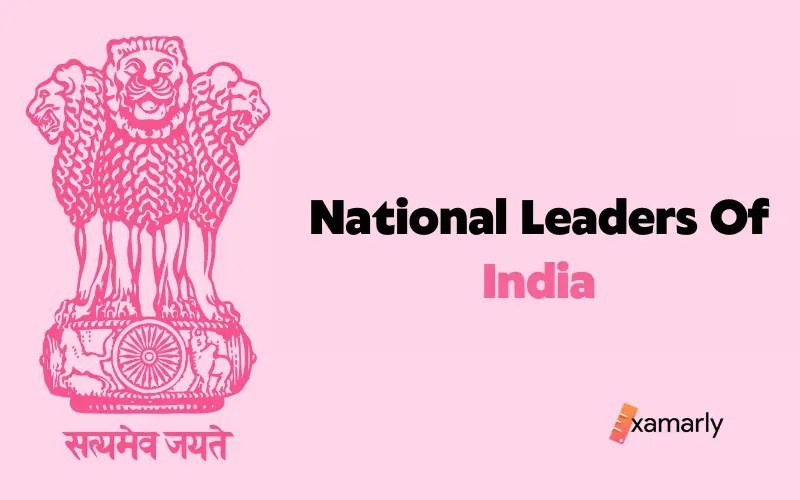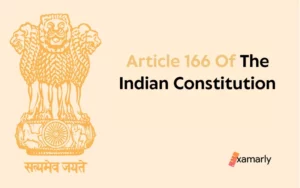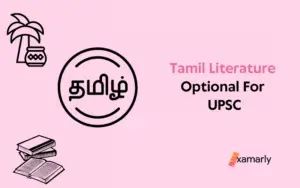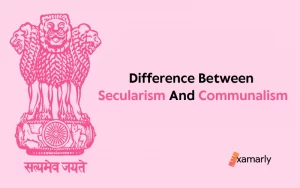National Leaders of India are those great Indian freedom fighters who spent their lives fighting for the Independence of India. The word “freedom fighters” refers to all of the great heroes who made important contributions to the Indian independence struggle from British Rule. Mahatma Gandhi, Sardar Vallabhai Patel, and Bal Gangadhar Tilak are a few of them.
Read this article ahead to know more about them and learn about other national leaders of India.
- The National Leaders of India
- Mahatma Gandhi
- Jawaharlal Nehru
- Subhas Chandra Bose
- Sardar Vallabhbhai Patel
- Lal Bahadur Shastri
- Bhagat Singh
- Bipin Chandra Pal
- Lala Lajpat Rai
- Chandra Shekhar Azad
- Bal Gangadhar Tilak
- Abul Kalam Azad
- Rabindranath Tagore
- Gopal Krishna Gokhale
- Dadabhai Naoroji
- Womesh Chandra Bonnerjee
- Conclusion
The National Leaders of India
Throughout its glorious history, India has produced some of the most effective leaders, who have inspired and led the rest of us.
Listed below are some well-known influential individuals of the twentieth century. Read on to discover the stories behind these leaders, and learn about how they shaped the modern India we know today.
Mahatma Gandhi
- One of the greatest national leaders of all time was Mahatma Gandhi actual name Mohandas Karamchand Gandhi, who led the Indian civil rights movement against British rule. Although he was a political figure, his nonviolent protest methods and persistence earned him worldwide acclaim. The honorific Mahatma, which was initially ascribed to him in 1914 in South Africa, is now used all over the world.
- He was born in coastal Gujarat in a Hindu Family. He was a politician, social activist, Indian lawyer, and writer who rose to prominence as the leader of the statewide uprising against British rule in India.
- In 1915, at the age of 45, he arrived in India and immediately began organizing peasants, farmers, and urban laborers to oppose exorbitant land taxation and discrimination.
- In 1921 he assumed the leadership of the Indian National Congress. Mahatma Gandhi spearheaded countrywide initiatives to alleviate poverty, promote women’s rights, foster religious and ethnic harmony, abolish untouchability, and, most importantly, achieve swaraj, or self-rule.
- Mahatma Gandhi protested the British-imposed salt tariff with the Dandi Salt March in 1930 and called for the British to Quit India in 1942.
- On 30 January 1948, while doing a prayer he was shot dead by Nathuram Godse a militant Hindu Nationalist.
Jawaharlal Nehru
- On November 14, 1889, Pt. Jawaharlal Nehru was born at Allabahad. He moved to England at the age of 15, spent two years at Harrow, and then enrolled in Cambridge University to complete his Tripos in Natural Sciences.
- Jawaharlal Nehru was an Indian anti-colonial patriot, secular humanist, social democrat, and novelist who served as India’s first prime minister for 16 years after the country gained independence in 1947.
- He was a delegate to the Bankipore Congress Party in 1912, and in 1919 he was named Secretary of the Allahabad Home Rule League. He met Mahatma Gandhi for the first time in 1916, and he was deeply moved by him. In 1920, he led the first Kisan March in Uttar Pradesh’s Pratapgarh District. In connection with the Non-Cooperation Movement of 1920–1922, he was twice put behind bars.
- In the 1930s and 1940s, Nehru was a key figure in the Indian nationalist movement. During the 1950s, he vigorously advocated parliamentary democracy, secularism, and science and technology, profoundly impacting India’s development as a modern nation.
- In September 1923, Pt. Nehru was appointed General Secretary of the All India Congress Committee. Nehru was influential in committing the Madras Congress to the idea of independence in 1926. In Lucknow in 1928, he was lathi-charged while organizing a protest against the Simon commission.
- Pt. Nehru was chosen President of the Indian National Congress’s Lahore Session in 1929, where ultimate independence for the country was adopted as the aim. During 1930-35, he was imprisoned multiple times in connection with the Salt Satyagraha and other activities undertaken by Congress.
- On 15 August 1947, he was sworn in as Prime Minister of the Dominion of India and hoisted the Indian flag at the Red Fort in Delhi.
Subhas Chandra Bose
- During the British Raj, Subhas Chandra Bose was born into wealth and privilege into a big Bengali family in Orissa. He had an Anglocentric education and was transferred to England after college to attempt the Indian Civil Service test.
- When he returned to India in 1921, he became a member of the nationalist movement led by Mahatma Gandhi and the Indian National Congress. He succeeded Jawaharlal Nehru as leader of a faction within the Congress that was less interested in constitutional reform and more receptive to socialism.
- During the Guwahati Session of the Congress in 1928, a division developed between the existing and new members of the Congress. The split between moderate Gandhi and aggressive Subhash Chandra Bose grew to unbridgeable dimensions, and Bose resigned from the party in 1939. The next year, he founded the Forward Bloc.
- With Japanese assistance, Bose reformed the Indian National Army (INA), which included Indian Army prisoners of war seized by the Japanese during the Battle of Singapore.
- He was a dynamic young influencer who acquired the moniker ‘Netaji’ by organizing and directing the Indian National Army (INA) during India’s independence fight.
Sardar Vallabhbhai Patel
- Vallabhbhai Jhaverbhai Patel, often known as Sardar, was an Indian lawyer, political leader, barrister, and politician who served as India’s first Deputy Prime Minister and Home Minister from 1947 to 1950.
- The Iron Man of India, Sardar Vallabhbhai Patel, is also known as the unifier of India. Following independence, he was instrumental in bringing more than 500 royal states into the Indian Union.
- Patel was born in Nadiad, Kheda district, and nurtured in Gujarat’s rural. He was a successful attorney. One of Mahatma Gandhi’s first political lieutenants, he led peasants from Kheda, Borsad, and Bardoli in nonviolent civil disobedience against the British Raj, becoming one of Gujarat’s most powerful leaders.
- He was elected as the 49th President of the Indian National Congress, where he organized the party for elections in 1934 and 1937 while also pushing the Quit India Movement.
- Patel was the principal representative from India’s Constituent Assembly, and Dr. B.R. Ambedkar was nominated on his recommendation. He was instrumental in establishing the Indian Administrative Service and the Indian Police Service. He is also known as the “patron saint of India’s Civil Servants” for establishing the present All India Services system.
Lal Bahadur Shastri
- Lal Bahadur Shastri was an Indian politician and statesman who served as the country’s second Prime Minister from 1964 to 1966 and its sixth Home Minister from 1961 to 1963.
- On October 2, 1904, Shri Lal Bahadur Shastri was born in Mughalsarai, a little railway town seven miles from Varanasi in Uttar Pradesh. Lal Bahadur Shastri grew up becoming increasingly engaged in the country’s quest for independence from foreign domination. In the 1920s, he joined the Indian independence movement after being deeply inspired and motivated by Gandhi.
- He supported the Amul milk co-operative of Anand, Gujarat, and established the Nationwide Dairy Development Board to promote the White Revolution, a national drive to expand milk production and supply. In 1965, Shastri also encouraged the Green Revolution in India. This resulted in an upsurge in food grain output, particularly in Punjab, Haryana, and Uttar Pradesh.
- He was the president of the Lok Sevak Mandal, which Lala Lajpat Rai started, and held key roles in the Indian National Congress.
- During the 1965 Indo-Pakistan war, he headed the country. During the conflict, his slogan “Jai Jawan, Jai Kisan” became immensely famous. He died in Tashkent on January 10, 1966. He received the Bharat Ratna posthumously.
Bhagat Singh
- Bhagat Singh was a 23-year-old Indian revolutionary freedom fighter who was executed by British invaders. He is remembered fondly as ‘Shaheed Bhagat Singh,’ and is regarded as a national hero of India’s liberation struggle against colonial authority.
- In Lahore, Bhagat Singh attended the Dayanand Anglo-Vedic School. In 1923, he enrolled in the National College in Lahore, which had been established two years before by Lala Lajpat Rai in reaction to Mahatma Gandhi’s non-cooperation movement, which pushed Indian students to avoid schools and colleges supported by the British Indian government.
- In December 1928, Bhagat Singh and an associate, Shivaram Rajguru, both members of the Hindustan Socialist Republican Association, shot dead a 21-year-old British police officer, John Saunders, in Lahore, Punjab, in what is now Pakistan, mistaking Saunders for the British senior police superintendent, James Scott, whom they had intended to assassinate.
- Later, he took part in a mostly symbolic bombing of the Central Legislative Assembly in Delhi, as well as a hunger strike in jail seeking better prison conditions for Indian inmates, which ended in Jatin Das’s death from malnutrition in September 1929.
- In the 1930s, he energised India’s emerging militancy and spurred serious introspection inside the Indian National Congress’s nonviolent but ultimately victorious struggle for India’s independence. Bhagat Singh was sentenced to death in March 1931 for the murders of John Saunders and Channan Singh. After his death, he became a folk hero.
Bipin Chandra Pal
- Bipin Chandra Pal was an Indian patriot, author, orator, social reformer, and freedom fighter in the Indian independence struggle. He was one of the three members of the “Lal Bal Pal” group.
- Bipin Chandra Pal was born into a Hindu Bengali Kayastha family in the hamlet of Poil, Habiganj, Sylhet District, Bengal Presidency of British India.
- Pal is regarded as the Father of Revolutionary Thoughts in India. Pal rose to prominence in the Indian National Congress. Bipin Chandra Pal presented a strong appeal for the repeal of the discriminatory Arms Act during the Madras session of the Indian National Congress in 1887.
- Sri Aurobindo Ghosh and Pal were acknowledged as the leading proponents of a new national movement centred on the values of Purna Swaraj, Swadeshi, boycott, and national education.
- To remove poverty and unemployment, Pal advocated and supported the adoption of Swadeshi and the boycott of imported goods. Through national critique, he hoped to eradicate social problems and generate emotions of nationalism.
- Sri Aurobindo called him “one of the mightiest prophets of nationalism.” Bipin Chandra Pal worked hard to eliminate social and economic evils. He was an outspoken opponent of the caste system and a supporter of widow remarriage.
Lala Lajpat Rai
- Lala Lajpat Rai was an author, freedom fighter, and politician from India. He was an important figure in the Indian independence struggle. “Punjab Kesari” or “Lion of Punjab” was his popular name. He was one of the Lal Bal Pal Trimurti’s three members.
- He was also involved in the early phases of the Punjab National Bank and the Lakshmi Insurance Company in 1894.
- In 1886, he traveled to Hisar, where his father was posted, and began practising law, becoming a founding member of the Hisar Bar Council alongside Babu Churamani. In the same year, he, Babu Churamani, and others co-founded the Hisar district section of the Indian National Congress and the reformist Arya Samaj.
- He left his law practise in 1914 to devote himself to the Indian independence struggle, first to Britain and then to the United States in 1917. He established the Indian Home Rule League of America in New York in October 1917. From 1917 until 1920, he lived in the United States. Arya Samaj and community representation influenced his early liberation struggle.
- In addition, he was chosen President of the All India Trade Union Congress. At the Nagpur session of the Congress in 1920, he backed Mahatma Gandhi’s non-cooperation movement. He was a vocal opponent of the Rowlatt Act and the subsequent Jallianwala Bagh massacre. In 1926, he was chosen deputy leader of the Central Legislative Assembly. In 1928, he introduced a motion in the parliament refusing to cooperate with the Simon Commission since it had no Indian members.
Chandra Shekhar Azad
- Chandra Shekhar Tiwari, also known as Chandra Shekhar Azad, was an Indian revolutionary who reorganized the Hindustan Republican Association (HRA) under the new name of Hindustan Socialist Republican Association (HSRA) following the deaths of its founder, Ram Prasad Bismil, and three other prominent party leaders.
- On 26th July 1906 Chandra Sekhar was born in a Bhabra Village, Alirajpur present-day Madhya Pradesh in a Brahmin family. Chandrasekhar Azad was interested in revolutionary movements at an early age. In 1921, he joined Mahatma Gandhi’s non-cooperation movement in response to the Jallianwala Bagh tragedy.
- He was imprisoned for the first time at the age of 15 when he was seized by Britishers and sentenced to 15 lashes. As a result of this episode, he adopted the surname Azad and became known as Chandrashekhar Azad.
- He was engaged in the 1925 Kakori Train Robbery. In 1928, he shot J.P. Saunders in retaliation for the death of Lala Lajpat Rai in Lahore. In 1929, he again attempted to blow up India’s Viceroy’s train.
- On September 9, 1928, Azad and Bhagat Singh covertly changed the Hindustan Republican Association (HRA) the Hindustan Socialist Republican Association (HSRA) in order to fulfil their principal aim of establishing a socialist-based sovereign India.
- When being encircled by police and seeing no way out after the ammo ran out, Chandra Shekhar Azad shot himself and died on February 27, 1931, at Alfred Park in Allahabad, which is today known as Azad Park.
Bal Gangadhar Tilak
- Bal Gangadhar Tilak, born Keshav Gangadhar Tilak and known as Lokmanya, was an Indian patriot, teacher, and independence social reformer. He was one-third of the Lal Bal Pal trio.
- Tilak was the first leader of the Indian freedom struggle. The British colonial rulers dubbed him “the founder of Indian unrest.” He was also given the title “Lokmanya,” which means “recognized by the people as their leader.” Mahatma Gandhi addressed him as “The Maker of Modern India “
- Bal Gangadhar Tilak was a freedom fighter and social reformer from India. He was a key figure in the development of contemporary India and was undoubtedly one of the most ardent supporters of Swaraj or Indian self-rule.
- During India’s campaign for independence, his well-known proclamation that “Swaraj is my birthright, and I shall have it” served as an example for upcoming revolutionaries.
- Tilak was elected to the Indian National Congress in 1890. He rejected its moderate position, particularly in the fight for self-government. He was one of the most visible radicals of the time.
- Tilak took up the cause by writing controversial pieces in his daily Kesari, invoking the Hindu text Bhagavad Gita to argue that no one should be held accountable for killing an oppressor without anticipating a recompense.
- Tilak supported the Swadeshi and Boycott campaigns following Bengal’s partition, a tactic intended by Lord Curzon to undercut the nationalist cause. The campaign included a boycott of foreign items as well as a social boycott of any Indian who utilized foreign goods.
- In 1916-18, Bal Gangadhar Tilak, G. S. Khaparde, and Annie Besant helped create the All India Home Rule League.
Abul Kalam Azad
- Abdul kalam Azad, commonly known as Maulana Abdul kalam Azad or simply Maulana Azad, was an Indian scholar, Islamic theologian, Senior leader of the Indian National Congress during the Indian Independence struggle, and independent activist. His full name is Abdul kalam Ghulam Muhiyuddin Ahmed bin Khairuddin Al-Hussaini Azad, and he was born in Mecca on November 11, 1888.
- Despite being Muslim, Azad frequently opposed the extremist ideologies of other well-known Muslim leaders, such as Muhammad Ali Jinnah.
- Maulana Abdul Azad was a man of great integrity and was widely regarded throughout his life. Azad wrote several poems in Urdu throughout his adolescence and also wrote extensively on religion and philosophy.
- Maulana Azad was chosen to the foundation committee for the Jamia Millia Islamia in Aligarh, Uttar Pradesh, in October 1920. Maulana Azad was the primary organizer of the Dharasana Satyagraha in 1931. He was also the most prominent national leader of the independence struggle, and he contributed to the establishment of secularism and socialism in India.
- Maulana Azad got close to Mahatma Gandhi and participated in several civil disobedience initiatives led by Gandhi, including the Salt Satyagraha movement. He was imprisoned in 1920 for his involvement in the salt satyagraha campaign, and he was later imprisoned again for his involvement in the Quit India movement. In 1923, Maulana Azad was elected president of the Indian Congress Party.
Rabindranath Tagore
- Rabindranath Tagore was a Bengali polymath who worked as a poet, novelist, dramatist, musician, philosopher, social reformer, and painter.
- Rabindranath Tagore was a multifaceted personality. He wrote the Indian National Anthem and won the Nobel Prize for Literature.
- He was a Brahmo Samaj philosopher, in addition, he was a cultural reformer who freed Bengali art from restrictions that kept it within the purview of classical Indian forms.
- People from many different nations respected and admired his writings, and he ultimately became the first non-European to earn the Nobel Prize.
- As a humanist, universalist, internationalist, and outspoken critic of nationalism, he condemned the British Raj and pushed for independence from Britain.
- In addition to Jana Gana Mana (the National Anthem of India), ‘Amar Shonar Bangla’, another of his compositions, was chosen as the National Anthem of Bangladesh, and the National Anthem of Sri Lanka was influenced by one of his works.
- In the 1915 Birthday Honours, King George V awarded a knighthood to Tagore, but he renounced it following the 1919 Jallianwala Bagh massacre.
Gopal Krishna Gokhale
- During the Indian independence struggle, Gopal Krishna Gokhale was a ‘moderate’ political leader and social reformer. Gokhale was a senior Indian National Congress official and the founder of the Servants of India Society.
- Gokhale joined the Congress in 1889 and battled for more political power in the administration alongside Bal Gangadhar Tilak, Dadabhai Naoroji, Bipin Chandra Pal, Lala Lajpat Rai, and Annie Besant.
- Both Gokhale and Tilak were prominent political leaders in the early twentieth century. Their views, however, were vastly different. Gokhale was seen as a well-meaning moderate, but Tilak was regarded as a radical who would not hesitate to use force to achieve independence.
- He was elected to the Bombay Legislative Council in 1899 and to the Imperial Council of the Governor-General of India as a non-officiating member for Bombay Province in 1901 and 1903.
- Gokhale committed his life to improve the welfare of the country. Gokhale was dispatched by Congress on a special mission to England in 1905 to inform the British authorities about India’s constitutional demands. He discussed the British government’s prejudice and harsh treatment of Indians.
- Gopal Krishna Gokhale thought that working inside existing British government institutions would be the best way to achieve social changes, which earned him the ire of more militant nationalists like Tilak.
- Gandhi referred to Gokhale as his mentor and adviser, as well as an amazing leader and great politician. He also published a Gujarati book about the Gokhale called ‘Dharmatma Gokhale.’
- On February 19, 1915, Gopal Krishna Gokhale died. Tilak paid respect to Gokhale in a Kesari column after his death.
Dadabhai Naoroji
- Dadabhai Naoroji was an Indian political leader, trader, academic, and writer who served as the 2nd, 9th, and 22nd President of the Indian National Congress from 1886 to 1887, 1893 to 1894, and 1906 to 1907.
- Between 1892 to 1895, he was the Liberal Party’s Member of Parliament in the United Kingdom House of Commons, and he was the country’s second MP of Asian heritage.
- Naoroji was also an active politician and was active in academic exercises, political campaigns, and journalism. Also referred to as the “Grand Old Man of India,” and “unofficial ambassador of India” he rose to prominence as a public figure and won the backing of suffragists and Florence Nightingale.
- During the time of British control in India, Naoroji’s work concentrated on the drain of wealth from India to Britain. At the start of the 20th century, Naoroji openly called for self-government, believing that this was the only way to stop the drain of wealth.
- In 1865, he played a key role in the foundation of the ‘London Indian Society.’ The society’s goal was to debate Indian social, political, and academic issues. In 1867, he also assisted in the formation of the East India Association, one of the forerunner organizations of the Indian National Congress, with the goal of presenting the Indian point of view to the British audience.
Related – Indian nationalism
Womesh Chandra Bonnerjee
- Womesh Chandra Bannerjee was a lawyer from India. He co-founded and served as the first president of the Indian National Congress.
- Womesh Chandra Bonnerjee was born on December 29, 1844, in Calcutta, to a prominent upper-middle-class Brahmin family.
- He was a Calcutta University fellow and the president of the law faculty and he frequently represented it in the legislative council. In 1901, he resigned from the Calcutta bar.
- He presided over the inaugural session of the Indian National Congress, which was held in Bombay from December 28 to December 31, 1885, and was attended by 72 members.
- In the 1886 session, held in Calcutta under the presidency of Dadabhai Naoroji, he proposed the formation of standing committees of the Congress in each province for better coordination of its work, and it was on this occasion that he advocated that the Congress limit its activities to political matters only, leaving the issue of social reforms to other organizations.
- He also spent some time in England practising law. While he was a resident there, the Liberal Party granted him a seat in the House of Commons elections from Barrow-in-Furness. Despite his failure, he was the first Indian to run for election to the British Parliament.
You Might Also Like – Women Freedom Fighters Of India
Conclusion
The British Raj was a terrible period in Indian civilization. The independence India has today is the result of the sacrifices and struggles of India’s freedom fighters and Nationalist leaders. This is the result of a concerted effort by many unknown freedom activists. Some national leaders received attention, while others remained in the shadows and worked for what we deserved. These are the leaders who made a stance and committed their lives to India’s independence.






